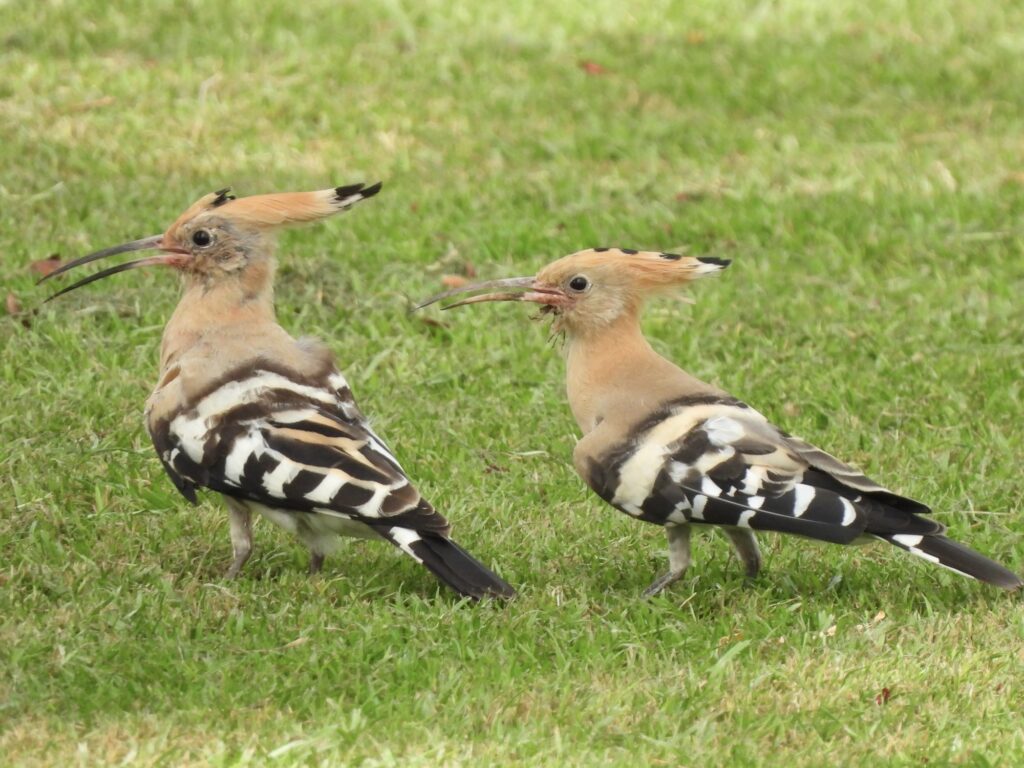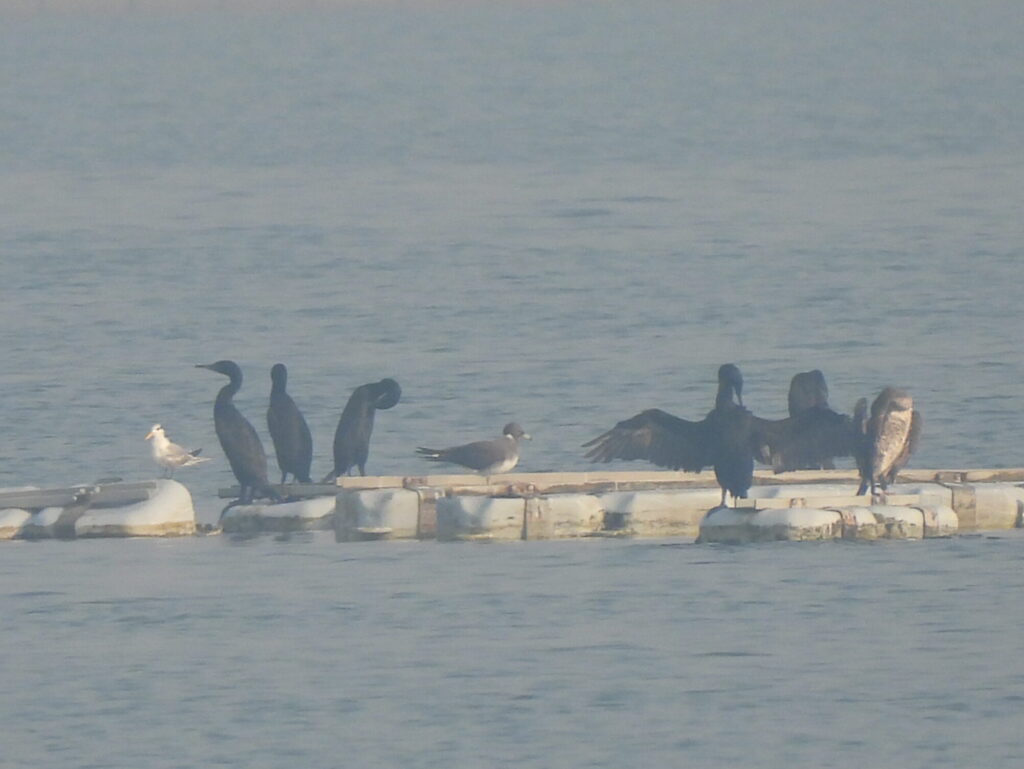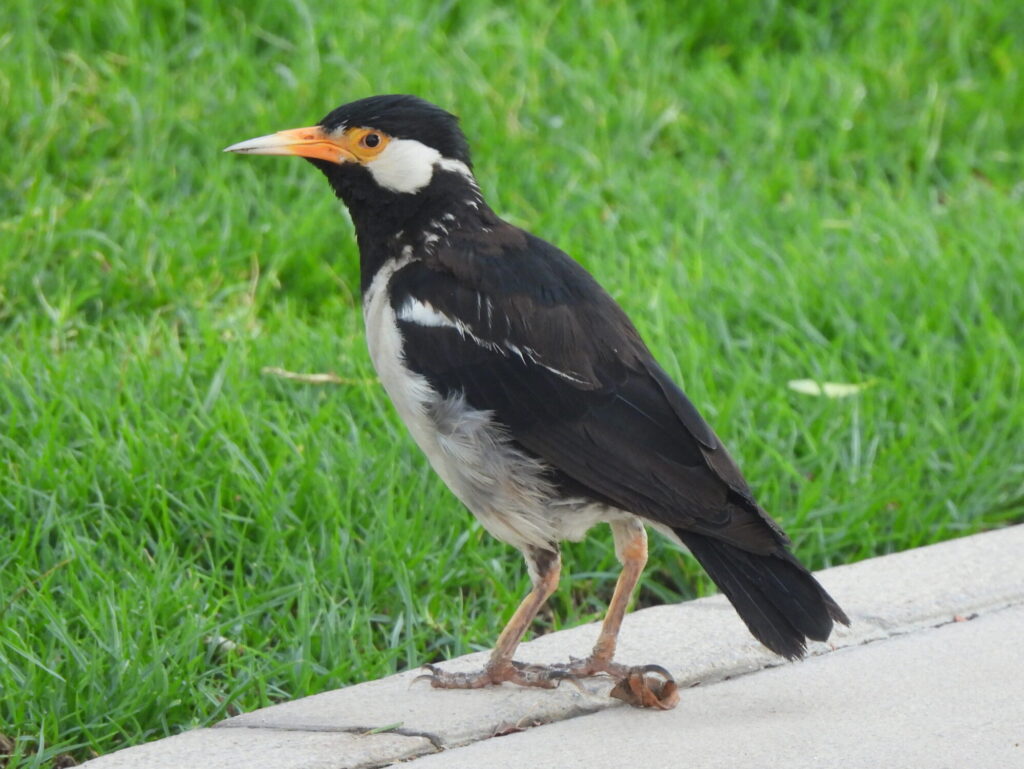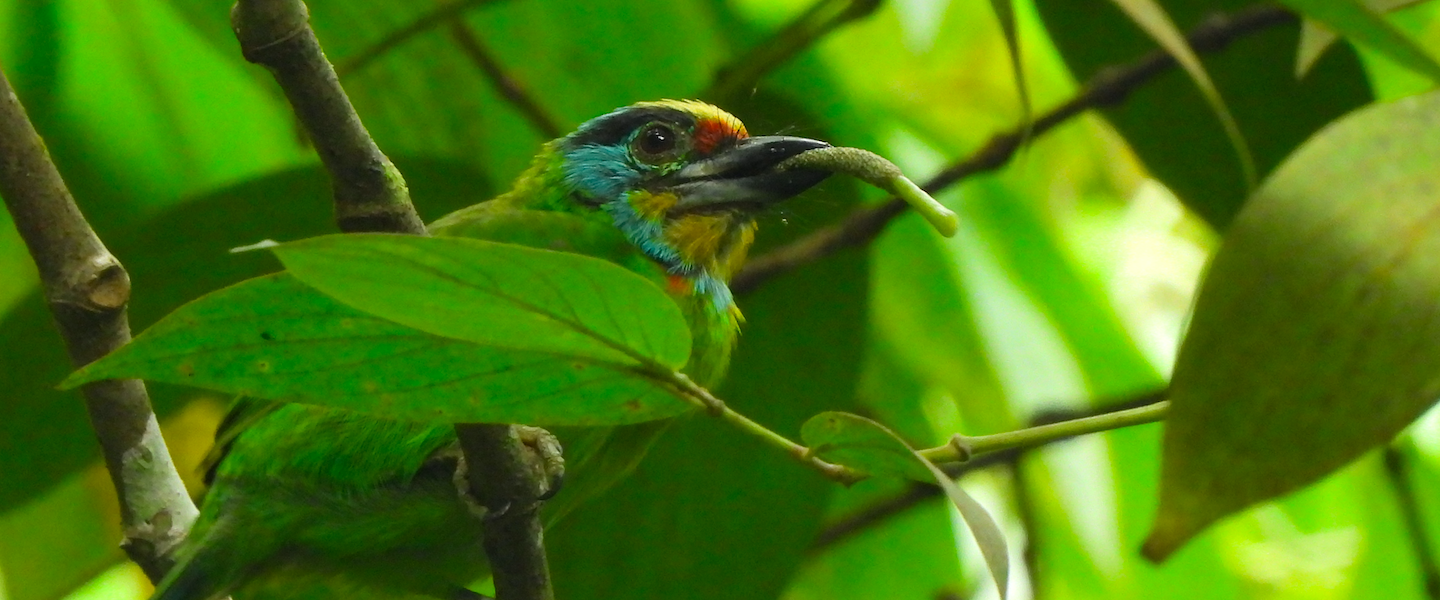Last winter, I had the chance to explore nature in Qatar during a long stopover in Doha on my way to Africa (see the report here). Now, Darío Gijón and I are heading to southeast Asia via Dubai, so we decided to take profit of it and get a glimpse of the urban biodiversity in this massive city in a relaxed way, while we got to know Dubai from our first time.

Two points are worth mentioning beforehand. First, the temperature. Winter was warm and pleasant on my visit to Doha, but the extremely hot temperatures of July in the Persian Gulf turn any short walk outdoors in an scrotching experience. Even if it can be hard to fully understand this limitation before being out and about, we agreed on taking the risk.

The second important point is something we found about only hours before reaching Dubai. We meant to visit Al Sufouh beach, a touristic spot where several Persian Gulf target birds can be seen over the summer, including coastal species such as Socotra cormorant (Phalacrocorax sulcirostris) and white-cheeked tern (Sterna repressa), and plenty of terrestrial birds on a nearby garden. However, Al Sufouh beach has been closed to the public for the last months without notice or expectations to re-open.

We touched down at Dubai International Airport at 07:00 after a comfortable flight from Madrid. By that time in the morning, temperature was already over 30ºC — wind chill would get up to 47ºC later! After easily going through immigration, we buy a metro day pass (AED 22 each, approximately 5.50 €) and headed out to our improvised backup location instead of Al Sufouh beach: Safa Park, a garden next to Dubai Canal where several bird species are very often reported. The park entrance is located 25 min by foot from Business Bay metro station, and there is an entrance fee of AED 3.

The handicap, as expected, was the walk in and out. Scenic views of the Burj Khalifa in the middle of the buildings didn’t make up for the scorching temperature for me. However, we spotted many different species just on the way from Business Bay. Common myna (Acridotheres tristis), house sparrow (Passer domesticus) and house crow (Corvus splendens) are widespread in the city, and it didn’t take long for us to spot Eurasian collared-doves (Streptopelia decaocto) and feral pigeons (Columba livia) too.

In short bushes right out of the metro station, the only Indian silverbill (Euodice malabarica) of the day hops on the ground before hiding. The first groups of white-eared bulbuls (Pycnonotus leucotis) sang and behaved cheerfuly in some trees nearby. Darío also found us the only red-vented bulbul (Pycnonotus caffer) of the day perched on a tree next to the road. A bit ahead, in the palm trees of a fenced property, a pair of obliging Indian rollers (Coracias benghalensis) gave us great looks and were the first simultaneous lifer for both of us.

We only spotted a small group of Indian pied starlings (Gracupica contra) pecked in a roadside lawn with common mynas, both introduced species in the UAE. Two native species were found at the end of our walk but then in many other gardens and bushes throughout the city: the laughing dove (Spilopelia senegalensis) and the purple sunbird (Cinnyris asiaticus), the last often noticed after ‘tailless’ birds flying fast from place to place, or after their loud song.

We had seen over half of the species for the day by the time we reached the park. However, a stroll in this green area was very welcome because of the shadow the trees offer. As no other visitors had come to the park in the morning, we laid under a sturdy tree and stayed looking for birds for over two hours. However, the species which stole the show was not a bird, but the five-striped palm squirrel (Funambulus pennantii). Singles and pairs of these funny little rodents looked out from the trees and ran around the lawn, often chasing each other and vocalizing a high-pitched call.

The lawns were also favored by good numbers of common mynas and a pandemonium of dozens of house crows which, just like us, rested in the shadow under a tree. We also spotted an Indian pied starling and a family group of hoopoes (Upupa epops).

We improved observations of most of the birds that we saw on our way to Safa Park. The few novelties came in form of three cooperative shikras (Tachyspiza badia), one of which stopped in the tree above us for a while; and some loud rose-ringed parakeets (Psittacula krameri) flying back and forth. After our stay in the park, and just as we stood up and started walking to the gate, three gray francolins (Ortygornis pondicerianus) quickly flew from the hedge shadow to the top of some trees.

We resumed our visit to Dubai with classic, not wildlife-focused sights of the city. Visiting the Dubai Mall was a great idea because of the fantastic views to Burj Khalifa from the Dubai Fountain nearby, the mesmerizing views of the parts of the Aquarium open to the public (look for the H&M in floor G), and because of the welcoming temperatures inside the building which allowed us to take a long break from the extreme heat.

Our next stop was Dubai Marina, further south. As we looked at the Burj Al Arab building from the metro, we noticed a tern flying towards and over the vehicle. Although we didn’t manage to identify the tern (beyond ‘Sterna-like’), we were surprised to find out that several terns were fishing in the Marina Walk area. As we got close, we could confirm it: among numerous lesser crested terns (Thalasseus bengalensis), there were at least three adults and a subadult white-cheeked tern (Sterna repressa), all fishing among the buildings.

The white-cheeked tern was the last but perhaps the most exciting lifer of the day. This species visits the Persian Gulf mostly to breed over the summer, although birds can also be found east to west India, in areas of the Red Sea, and south to Somalia. The jizz feels odd, as the bird flies like a Sterna-tern despite seemingly not hovering before fishing, and looking quite dark from afar, somewhat similarly to the whiskered tern (Chlidonias hybrida), but with a different flight style.

We stayed in the picturesque Dubai Marina for a couple of hours, enjoying the flights of lesser crested terns and white-cheeked terns, and additionaly finding a juvenile striated heron (Butorides striata). After 18.00, we visited the Dubai Fountain again to enjoy the majestic fountain show, before calling it a day and heading back to the airport for a well deserved shower and a flight to Singapore.

EDIT: On our flight back from Asia to Europe we figured how to connect with some of the specialties that Al Sufouh beach had to offer. Al Majaz Park in Sharjah city had recently gathered different eBird records of sooty gull (Ichthyaetus hemprichii), a species mostly restricted to the Red Sea and extending to the Persian Gulf and coasts of Kenya and Tanzania. We had few hours to spare early in the morning so we headed there as soon as we arrived to avoid the extreme heat — despite the transport system is different than that heading to Dubai, we asked around and easily managed to get there.

The garden of Al Majaz Park had some numbers of common mynas, Indian pied starlings and rose-ringed parakeets feeding on the grass, and we connected with a singing delicate prinia (Prinia lepida) as well.

However, our target was further away in the sea. Some structure in the middle of the sea seemed to be the stakeout where the sooty gull was resting, along with tens of lesser crested terns, a whimbrel (Numenius phaeopus) and dozens of Socotra cormorants (Phalacrocorax nigrogularis) — some of which fishing closer to the park. Once again, Dubai prove us that its best birding scene is on its shores.




